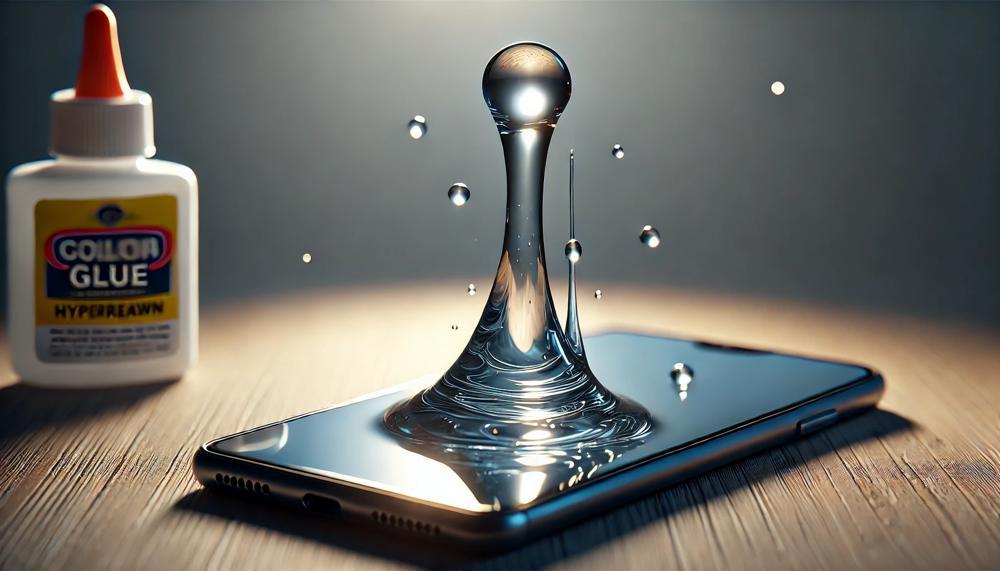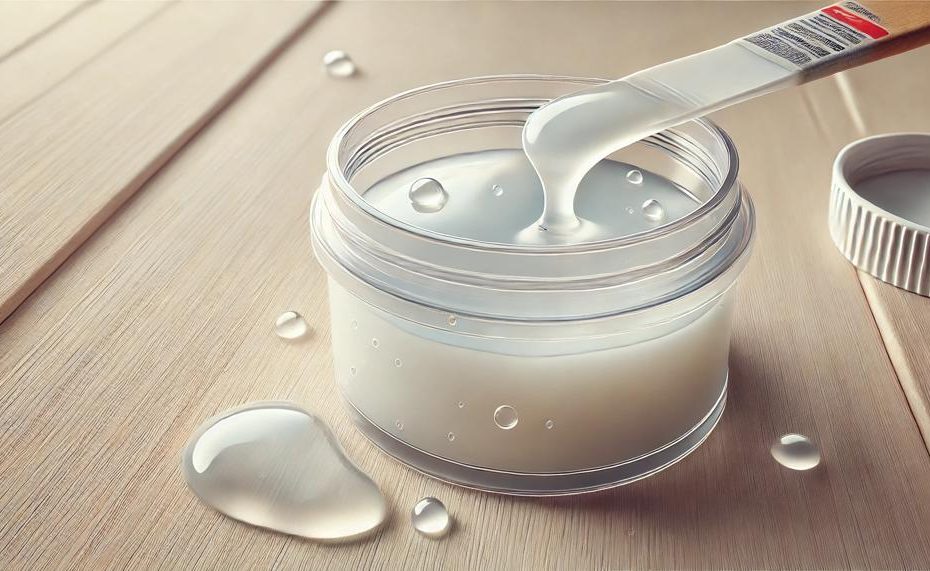Yes, glue can be watered down, but it depends on the type of glue you’re working with. For many DIY enthusiasts and crafters, knowing how to properly thin glue can make a world of difference in achieving a smoother finish and easier application.
While PVA glue and white school glue can be effectively thinned with water, other types like superglue, epoxy, and contact cement cannot. Understanding the nuances of thinning glue can save you time and enhance your projects.
Table of Contents
- 1 What Types of Glue Can Be Thinned Down With Water?
- 2 What Types of Glue Cannot Be Thinned Down With Water?
- 3 Benefits of Thinning Glue with Water
- 4 Risks of Thinned Glue
- 5 How to Thin Down Glue with Water
- 6 Tips for Thinning Glue with Water
- 7 Benefits of Thinning Glue with Water
- 8 Risks of Thinned Glue
- 9 How to Thin Down Glue with Water
- 10 Tips for Thinning Glue with Water
- 11 Conclusion
Key Takeaways:
- Type Matters: Only certain glues, like PVA and white school glue, can be thinned with water.
- Controlled Dilution: Add water gradually to avoid weakening the glue’s bonding strength.
- Warm Distilled Water: This is the best option for thinning, ensuring a smoother mix.
- Alternative Thinners: For non-water-soluble glues, substances like rubbing alcohol or acetone might be necessary.
- Safety First: Thinned glue should be used promptly to prevent mold growth.
- Read Instructions: Always check the glue’s label for specific thinning guidelines.
By mastering the art of thinning glue, you can tackle your projects with more precision and confidence. Whether you’re working on a simple school project or a complex craft, the right consistency can make all the difference. Ready to learn more? Let’s dive into the details of how to thin various types of glue and ensure your projects stick together seamlessly.
What Types of Glue Can Be Thinned Down With Water?
Not all types of glue can be thinned down with water. Specific types of glue that work best with water thinning include:
- PVA Glue (Polyvinyl Acetate)
- White School Glue
These glues are water-soluble and can be diluted without compromising their adhesive strength significantly. Here’s a detailed look at the types of glue and their compatibility with water:
| Type of Glue | Can Be Thinned with Water? | Notes |
| PVA Glue | Yes | Commonly used in woodworking and crafts; retains strength when thinned with small amounts of water. |
| White School Glue | Yes | Ideal for paper and light crafts; easy to thin with water for smoother application. |
| Superglue (Cyanoacrylate) | No | Not water-soluble; thinning with water will ruin the adhesive properties. |
| Epoxy | No | Requires specific hardeners; adding water can prevent proper curing. |
| Contact Cement | No | Designed for strong, instant bonds; water will not thin it effectively. |
Important Tips for Thinning Glue with Water:
- Use Warm Distilled Water: This helps in achieving a consistent mixture without impurities.
- Add Water Gradually: Start with small amounts to avoid over-thinning, which can weaken the bond.
- Test First: Apply the thinned glue on a scrap piece of material to ensure it still adheres properly.
- Immediate Use: Thinned glue should be used immediately to prevent mold growth.
What Types of Glue Cannot Be Thinned Down With Water?
Several types of glue resist dilution with water due to their unique chemical compositions. Here’s a detailed look at these adhesives:
| Type of Glue | Description | Reason |
| Super Glue (Cyanoacrylate) | A fast-drying adhesive ideal for small repairs and bonding non-porous surfaces. | Water causes cyanoacrylate to cure rapidly, making it unsuitable for thinning. |
| Epoxy Resin | A strong, durable adhesive used in construction and crafts, consisting of two parts: resin and hardener. | Epoxy cures through a chemical reaction, not evaporation, so water interferes with the bonding process. |
| Polyurethane Glue | An extremely strong adhesive used for wood, metal, ceramic, and more. | Polyurethane glue reacts with moisture to cure, thus water cannot be used to thin it. |
| Contact Cement | A versatile adhesive used for laminates, flooring, and other surfaces where a strong, immediate bond is needed. | Contact cement relies on solvent evaporation to bond, so adding water disrupts this process. |
| Marine Grade Adhesive | Specifically designed for underwater or wet conditions, often used in boat repairs. | Formulated to be waterproof and resistant to moisture, making it incompatible with water thinning. |
Benefits of Thinning Glue with Water
Thinning glue with water offers several advantages, primarily related to ease of application and improved workability. When properly diluted, the glue becomes more manageable, spreads more evenly, and penetrates porous materials better. However, it is crucial to maintain the right glue-to-water ratio to avoid compromising adhesive strength.
Advantages of Thinning Glue with Water:
| Aspect | Benefit | Explanation |
| Application | Easier spreading and coverage | Thinned glue has a reduced viscosity, making it simpler to apply smoothly across surfaces, which is particularly beneficial in tasks like bookbinding and woodworking. |
| Absorption | Enhanced penetration | Water-thinned glue seeps deeper into porous materials, leading to stronger bonding in substrates like wood or fabric. |
| Consistency | Improved uniformity | Adjusting the water content allows you to tailor the glue’s consistency for specific applications, facilitating better control during use. |
| Flexibility | Customizable for different needs | You can experiment with different dilution ratios to achieve the ideal consistency and working properties for your project. |
Impact on Strength and Application:
- Strength: Excessive dilution weakens the adhesive properties of the glue, reducing its bonding strength. This is because the glue becomes too thin and can’t form a strong bond between surfaces. It’s vital to strike a balance—too much water, and the glue loses its efficacy; too little, and it remains too thick to work effectively.
- Application: Thinned glue tends to have a shorter working time. Because it’s less viscous, it dries faster, requiring quicker application. For optimal results, mix the glue and water in a separate container and use immediately to maintain the desired consistency and bonding strength.
Recommendations
:
- Use Distilled Water: Tap water might contain minerals that can affect glue performance. Distilled water ensures purity, maintaining glue quality.
- Mix Thoroughly: Use a stir stick or brush to combine the glue and water thoroughly. This ensures a consistent blend and prevents clumping or uneven bonding.
- Experiment Carefully: Adjusting the ratio slightly can help achieve the perfect mix for your specific project. Start with small batches to avoid wastage.
Risks of Thinned Glue
Using thinned glue can be fraught with various hazards that can undermine your project’s integrity. Below, we explore these risks and provide strategies to avoid them.
Potential Hazards
- Inconsistent Bond Strength: Thinning glue, particularly with water, can dilute the adhesive properties, leading to weaker bonds.
- Application Issues: Over-thinning can result in glue that is too runny, making it difficult to control and apply evenly.
- Surface Penetration: Thinned glue may seep too deeply into porous materials, reducing its effectiveness at the surface level.
- Drying Time Variability: Thinned glue can alter the expected drying times, potentially leading to incomplete curing.
- Shrinkage and Cracking: Excessively thinned glue can shrink as it dries, which might cause cracking or gaps in the bond.
Avoidance Strategies
- Proper Thinning Ratios: Always follow manufacturer guidelines for thinning glue to ensure the right consistency and maintain adhesive strength.
- Testing Before Application: Perform a small test application on a scrap piece to gauge the glue’s performance and adjust the thinning ratio if needed.
- Gradual Thinning: Add thinning agents gradually, mixing thoroughly and checking the consistency to avoid over-thinning.
- Application Tools: Use appropriate tools, such as brushes or rollers, to ensure even application and control.
- Monitoring Drying Times: Adjust your project’s schedule to accommodate any changes in drying times due to thinning.
Table of Risks and Avoidance Strategies
| Potential Hazard | Explanation | Prevention Strategy |
| Inconsistent Bond Strength | Weakens adhesive properties | Follow manufacturer guidelines for thinning ratios |
| Application Issues | Glue becomes too runny and hard to control | Add thinning agents gradually and mix thoroughly |
| Surface Penetration | Glue seeps too deeply into materials | Test on scrap materials to gauge performance |
| Drying Time Variability | Alters expected drying times | Monitor and adjust project schedule accordingly |
| Shrinkage and Cracking | Thinned glue shrinks and cracks upon drying | Use appropriate tools for even application |
How to Thin Down Glue with Water
To properly thin down glue with water, follow these steps:
Check Compatibility
Ensure your glue is water-soluble by reading the label or manufacturer’s instructions. PVA glue and white school glue are typically suitable for thinning with water.
Gather Materials
You’ll need the glue, warm distilled water, a mixing container, and a stirring utensil.
Measure and Mix
Start by adding a small amount of warm distilled water to the glue. A good ratio to begin with is 1 part water to 10 parts glue. Stir thoroughly to ensure even mixing.
Test Consistency
Test the thinned glue on a scrap piece of material. Check for desired consistency and bonding strength. If the glue is still too thick, gradually add more water, mixing thoroughly after each addition.
Adjust as Needed
Continue adjusting the mixture until you achieve the right consistency for your project. Be cautious not to add too much water, as it can weaken the adhesive properties of the glue.
Application
Apply the thinned glue to your project as needed. Ensure it’s used promptly to avoid potential mold growth.
Tips for Thinning Glue with Water
Thinning glue with water can be done safely and effectively by following these steps:
Prepare the Glue
Pour the glue into a clean container. This gives you control over the thinning process and prevents contamination.
Add Water Gradually
Use warm distilled water to avoid impurities. Start with a small amount, typically a 1:1 ratio of water to glue, and stir thoroughly. If the glue is still too thick, add water in small increments, mixing well each time.
Test Consistency
Brush the mixture onto a test surface. If it’s too thick, add more water slowly until the desired consistency is reached.
Follow Manufacturer’s Instructions
Check the glue’s label for any specific recommendations on thinning agents and ratios. Some glues may require specific solvents or conditions.
Test Adhesion
Before using the thinned glue on your project, apply it to a small test piece to ensure it adheres properly. This step is crucial as thinning can affect drying time and bonding strength.
Benefits of Thinning Glue with Water
The advantages of thinning glue with water are numerous, offering both practical and economic benefits. Here are the key benefits explained:
Cost-Efficiency:
Thinning glue with water helps extend the lifespan of your glue, making it last longer and thus saving money.
This can be particularly advantageous for large projects or frequent use.
Easier Application:
Thinned glue is easier to spread, allowing for a more even application. This smooth application minimizes the effort required and improves the quality of the finished product.
Smoother Finish:
By reducing the glue’s viscosity, you achieve a smoother finish with fewer imperfections. This is crucial for projects requiring a polished look, such as fine woodworking or detailed crafts.
Reduced Air Bubbles and Clumping:
Thinning the glue decreases the risk of air bubbles and clumping, which can compromise the strength and appearance of the bond. A uniform application ensures a stronger and cleaner finish.
Versatility:
Thinned glue can be used across various projects, from crafting to woodworking and DIY endeavors. This versatility makes it a valuable tool in any hobbyist or professional’s toolkit.

Easy Clean-Up:
Water-thinned glue is simpler to clean up, both from your tools and your workspace. It also dries clear, maintaining the aesthetic integrity of your project.
Stronger Bond:
Thinning glue can enhance its penetrating ability, leading to a stronger bond between materials. This is particularly useful for porous surfaces where deep adhesion is necessary.
Risks of Thinned Glue
Thinning glue with water, though seemingly practical, introduces several hazards compared to using it in its original form. Here are the main risks associated with using thinned glue:
| Risk | Explanation | Potential Consequences |
| Decreased Adhesive Strength | Thinning glue reduces its adhesive properties, making it less effective at bonding surfaces. | Weakened structures and potential safety hazards in home repairs or construction projects. |
| Compromised Durability | Watered-down glue becomes more susceptible to heat, moisture, and pressure, compromising its long-term strength. | Reduced lifespan of repaired items, especially in conditions requiring strong adhesion like furniture or household fixes. |
| Uneven Consistency | Achieving the right balance between thickness for adhesion and thinness for application is challenging. | Weak spots in the bonded surfaces, leading to easy breakage and ineffective repairs. |
| Unpredictable Drying Time | Thinned glue dries at an inconsistent rate, affecting the bonding process. | Messy applications, potential accidents, and damage due to premature handling or pressure application before full drying. |
How to Thin Down Glue with Water
To thin down glue with water, the general guideline is to add no more than 10% water to the total amount of glue. This ensures the glue retains its adhesive properties while becoming easier to apply.
- For PVA Glue (e.g., white school glue)
- Recommended Ratio: Mix 100 ml of glue with up to 10 ml of water.
- Method: Gradually add warm distilled water and stir well to achieve the desired consistency.
- For Wood Glue
- Recommended Ratio: Mix 100 ml of glue with up to 5-10 ml of water.
- Method: Slowly incorporate the water, stirring thoroughly until the glue reaches a spreadable but effective consistency.
Table: Water to Glue Mixing Ratios
| Type of Glue | Glue Amount (ml) | Max Water Amount (ml) |
| PVA (White School Glue) | 100 | 10 |
| Wood Glue | 100 | 5-10 |
Tips for Thinning Glue with Water
To effectively thin glue with water, follow these steps:
| Step | Description | Important Notes |
| Prepare the Glue | Pour a small amount into a container | Use a clean, dry container |
| Add Water | Start with a 1:1 ratio of water to glue | Use warm distilled water for best results |
| Mix Thoroughly | Stir until fully combined | Avoid lumps |
| Test the Consistency | Apply to a test surface | Adjust as needed |
| Adjust Accordingly | Add water incrementally | Be cautious of weakening the glue |
| Consider Compatibility | Use water with PVA or white glue | Use alternative thinners for other glues |
| Read Instructions Carefully | Follow manufacturer’s guidelines | Each glue type has specific needs |
| Test Before Use | Try on a scrap material first | Ensure desired effect |
| Be Mindful of Strength and Drying Time | Monitor changes in properties | Thinned glue dries differently |
| Practice Regularly | Refine your technique | Achieve better results over time |
Conclusion
Watering down glue can be a game-changer for DIY enthusiasts and crafters, but it’s all about choosing the right type. Thinning glue isn’t a one-size-fits-all approach; it hinges on the specific glue you’re using. PVA glue and white school glue can be successfully diluted with water, making them versatile options for achieving a smoother finish and easier application. On the other hand, glues like superglue, epoxy, and contact cement resist water thinning, often requiring special thinners to maintain their effectiveness.
To thin glue properly, add warm distilled water gradually, which ensures a consistent mixture without significantly weakening the bond. Use small amounts and test on a scrap piece before full application to avoid over-thinning. Immediate use of thinned glue is crucial to prevent issues like mold growth.
Understanding these nuances can elevate your craft projects from good to great, providing precision and a seamless finish.






